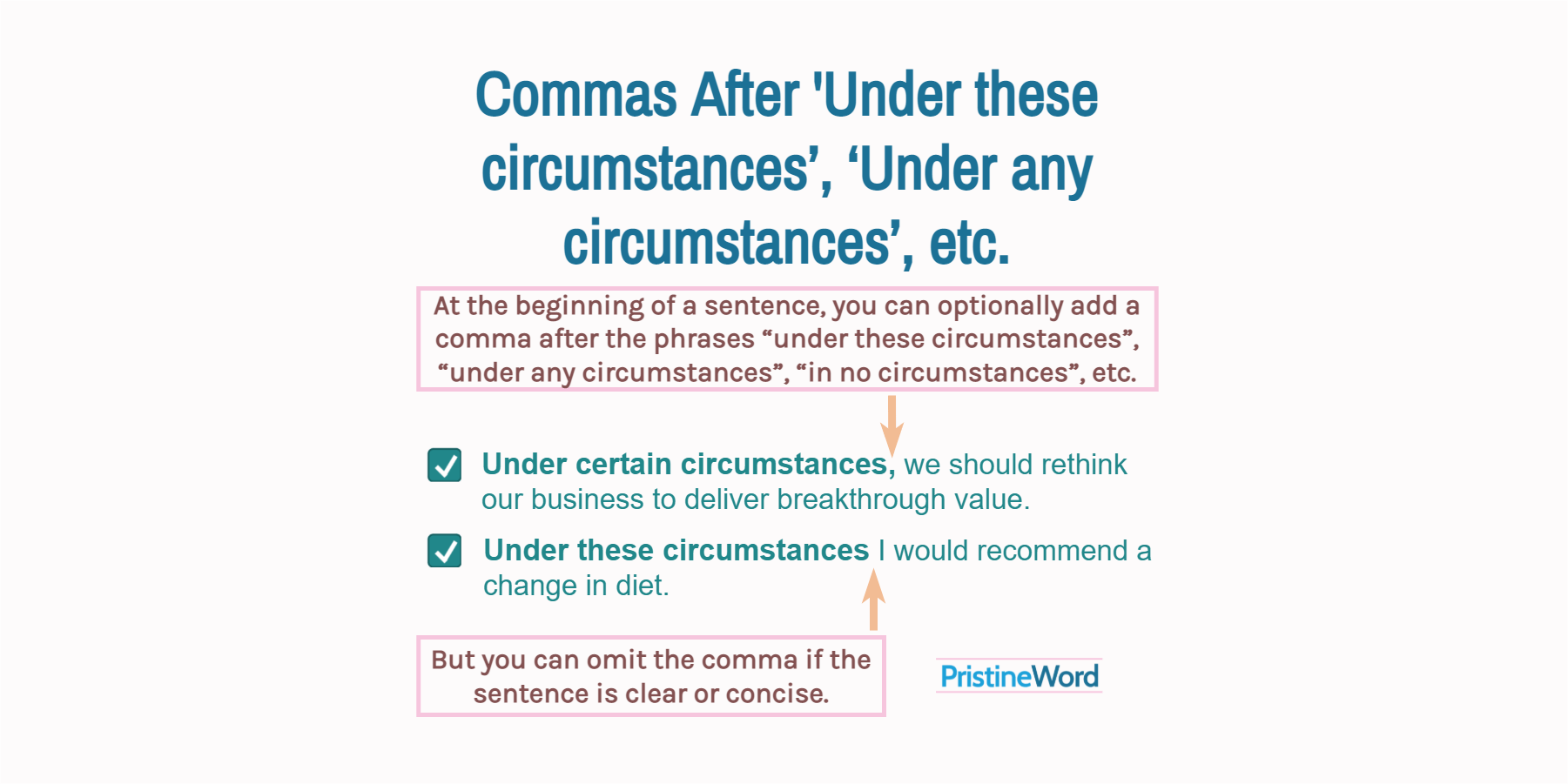At the beginning of a sentence, you can optionally add a comma after the phrases “under these circumstances”, “under any circumstances”, “in no circumstances”, “under certain circumstances”, etc.
At the beginning of a sentence, you can optionally add a comma after the phrases “under these circumstances”, “under any circumstances”, “in no circumstances”, “under certain circumstances”, etc.
Under certain circumstances, we should rethink our business and operating models to deliver breakthrough value.
But you can omit the comma if the sentence is clear or concise.
Under these circumstances I would recommend a change in diet.
In the middle or at the end of a sentence, commas are generally unnecessary—although they may be needed in particular situations.
Drugs are not allowed in college dorms under any circumstances.
1. Optional Comma at the Start of a Sentence
Expressions like “under these circumstances”, “under any circumstances”, “under no circumstances”, “in no circumstances”, etc. are prepositional phrases.
Under these circumstances, there has been a decline in the dependence of population on agriculture.
At the beginning of a sentence, we frequently add a comma after these expressions.
Under any circumstances, racism is unacceptable in this company.
But you can drop the comma if the sentence is clear or brief.
Under these circumstances we should cancel the meeting.
Typically, the longer the introductory phrase, the more likely you will use a comma after it.
Under these extremely difficult circumstances, It is absolutely essential that local authorities start investing in infrastructure and natural resources.
If the sentence is long or complicated, place a comma to make it clearer or avoid misunderstanding.
Under certain circumstances, investors have to buy stocks and other financial assets because central banks are in no position to tighten monetary policy.
When using a negative expression, such as "in no circumstances" or "under no circumstances", at the start of a sentence for rhetorical effect, the subject and auxiliary are inverted:
In no circumstances must it become an instrument of political manipulation.
2. In the Middle of a Sentence
In the middle or at the end of a sentence, we do not commonly use a comma to separate an adverbial prepositional phrase, such as “under these circumstances”, from the rest of the sentence.
Revealing personal information without consent should be avoided under any circumstances.
There are particular sentence structures, however, where commas may be required. For example, use a comma before a coordinating conjunction ("but" in the example below) to separate two independent clauses.
Applications should take four to five days to process under normal circumstances, but we are experiencing an unusually high volume of applicants at the moment.

